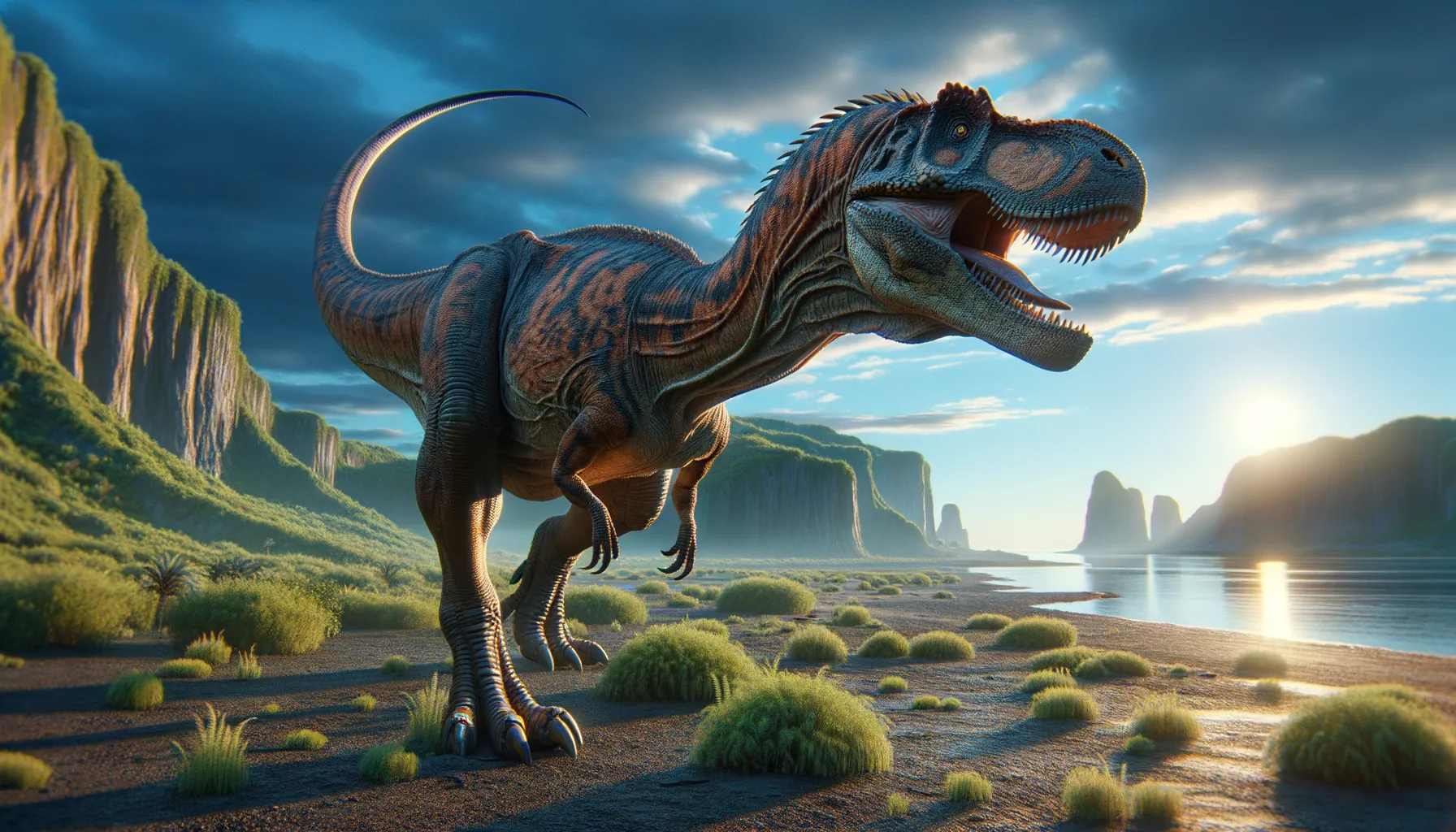
Beishanlong
A Cretaceous giant with unique claws.
Period
Cretaceous
Length
Around 9 meters in length (30 feet).
Height
Up to 4 meters tall (13 feet).
Weight
Approximately 1,400 kilograms (3,086 pounds).
Beishanlong was a large theropod dinosaur that lived during the Late Cretaceous period in what is now China. It is considered an early relative of therizinosaurs, known for their large size and unique features. The discovery of its fossils has provided crucial insight into the diversity and evolution of therizinosaur giants, bridging gaps in our understanding of this fascinating family of dinosaurs.
Diet
Beishanlong is believed to have been an omnivore, feeding on both plants and smaller animals. Its diet likely included a variety of vegetation as well as prey it could catch or scavenge.
Hunting
Beishanlong may have used its strong legs to chase down prey or forage for food in the environment. It might have also scavenged from other predators' kills when the opportunity arose.
Environmental challenges
During the Late Cretaceous, Beishanlong faced a dynamically changing environment with volcanic activity and shifting climates. Predator pressure and competition for food would have been significant challenges as well. Climate fluctuations might have affected the availability of its food sources, influencing its dietary habits.
Speed
Likely moderate, capable of running but not extremely fast.
Lifespan
Estimated to be several decades, typical of large dinosaurs.
First discovery
Discovered in 2006 in Gansu Province, China.
Fun Facts
- Beishanlong was a large, bird-like dinosaur that lived during the Early Cretaceous period, around 120 million years ago.
- The name Beishanlong means 'Beishan dragon', named after the Beishan region in China where its fossils were found.
- Beishanlong belonged to a group of dinosaurs called therizinosaurs, which were known for their long claws and herbivorous diet.
- Despite its bird-like appearance, Beishanlong didn't fly. It was a ground-dwelling dinosaur that likely moved on two legs.
- Estimates suggest Beishanlong could grow up to 26 feet long, making it one of the largest known members of its group.
- Beishanlong's discovery helped paleontologists understand more about the diversity and evolution of therizinosaur dinosaurs.
- Fossils of Beishanlong were found in China, highlighting the rich dinosaur fossil record of the region.
Growth and Development
Beishanlong likely experienced rapid growth during its early years, similar to other large theropods. As it matured, its growth rate would have slowed, achieving its immense size over several years. Fossil evidence indicates a medullary bone in females, suggesting a complex development and reproductive process.
Habitat
Beishanlong inhabited a semi-arid floodplain with diverse vegetation, providing ample food resources. The area would have been rich in other dinosaur species, indicating a busy ecosystem. Availability of water and seasonal climatic conditions played a critical role in shaping its habitat.
Interaction with other species
Beishanlong would have shared its environment with various other dinosaurs, both herbivorous and carnivorous. Its interactions might have included competition for food and territory. As a large dinosaur, it possibly had few predators but would still need to be cautious of threats.
Natural lifespan
It is estimated to have lived naturally for around 30 to 40 years.
Reproduction
Beishanlong likely laid eggs in nests, similar to other theropods. The discovery of medullary bone suggests that females had the ability to store calcium for eggshell production. Parental care might have been involved, though direct evidence is less conclusive.
Social behaviour
It might have lived in small groups, possibly foraging together for food. Interaction with other species may have included competition and some form of social hierarchy. Communal behavior could have provided advantages in raising young or defending against predators.
Fossil locations
The main fossil site for Beishanlong is located in the Gansu Province of China. Its discovery added important new data to the fossil record for theropods in Asia. Excavations revealed well-preserved skeletal parts, enabling detailed study of this species.
